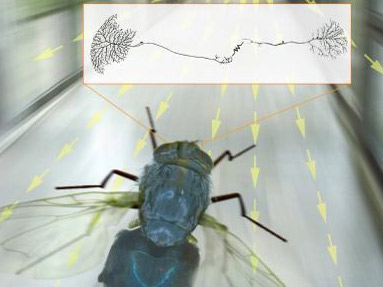Mad scientists build flight sim for flies
Studying how to make better robots, control insects, enslave world

There's a real buzz in the evil genius community over the latest gadget dreamed up by brain researchers at the Max-Planck Institute for Neurobiology in Munich.
Scientists there have built the world's flight simulator for flies, as part of their quest to create a new breed of intelligent flying robots.
Professor Alexander Borst and his minions have designed a wraparound display that presents diverse patterns, movements and sensory stimuli to blow flies.
Mind-reading insects
The insect is held in place by a halter, so that electrodes can register the reactions of its brain cells, allowing the boffins to observe and analyse what happens in a fly's brain when (it thinks) it's flying.
Researchers have long known that flies see and react much faster than humans, despite having a brain the size of a pin-head. For human eyes, anything more than 25 discrete images per second will merge into a continuous movement. However, a blow fly can perceive 100 images per second and interpret them quickly enough to steer its movement precisely.
Initial results suggest that flies process images from their immobile, compound eyes in a completely different way from humans. Movements in space produce 'optical flux fields' that are analysed by tiny 60-cell clusters of specialised neurons.
Sign up for breaking news, reviews, opinion, top tech deals, and more.
The German scientists hope to apply their findings by developing small, flying robots whose position and movement in flight will be controlled by a computerised system for visual analysis inspired by the fly's brain.
Their long-range aim is to enable the creation of intelligent machines that can interact with people directly, effectively, and safely. Or perhaps to create massive swarms of remote-controlled flies to pick the pockets of law-abiding citizens - you have been warned!
Mark Harris is Senior Research Director at Gartner.